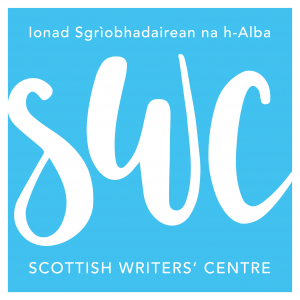If you missed last week’s wonderful event with A C Clarke, then don’t worry – today on the blog we have an interview with the writer herself! SWC’s Literary Editor Rachel Walker talked to A C Clarke about her influences, interests and how she came to be fascinated with Margery Kempe.

Margery Kempe is an unusual figure to have prompted a poetry collection. Can you tell us a bit about Margery Kempe, and your fascination with her?
Margery was a woman living in fifteenth century King’s Lynn (at that time simply called Lynn) who, after the birth of her first child, started to have visions. At first these were terrifying visions of devils, but then they became visions of Christ and the Virgin, with whom she had many inner conversations, described by her as ‘feelings’.
At the end of her life, in her sixties, she dictated her experiences to an unnamed cleric and the result has been called the first autobiography in English. I first came across her when studying medieval English literature at college years ago and I am by no means the only person to have been fascinated by her exuberant and forceful personality as it comes through the pages of her book , which is often unwittingly revealing (and comic) in its anecdotes. Although when I wrote the poems I wasn’t aware of other poems about her, since then I have found that Alwyn Marriage, who runs Oversteps Books (the publisher of A Troubling Woman) has a poem about Margery in her own collection In The Image: Portraits of Medieval Women (Indigo Dreams Press) and that Sarah Law who edits Amethyst Review has a whole collection herself about Margery, Ink Tears. In my case I wanted a companion collection to my poems about the atheist priest Jean Meslier, Fr Meslier’s Confession, examining this time various aspects of belief and doubt and using the same general pattern, a central protagonist (this time a woman) and different voices.
Are there any other female historical figures who have had an impact upon your writing or life?
I tend to write about marginalised figures, male and female, and so have written poems about such historical figures as the ‘wild girl of Champagne’, the Sicilian fairy’ (but also their male counterparts ‘Wild Peter’ and the ‘Irish Giant’), Helen Duncan (the last person in the UK to be tried for witchraft) etc. I would not say any of them has had an influence on my life. The female figure with the most impact on my writing (indirectly) is, as for many other women, Virginia Woolf. Currently I am writing a series of poems about Gala and her circle. She was the first wife of the surrealist poet Paul Eluard, and later married Salvador Dali. She is not a marginal figure exactly, but one who is in the background of several famous men and famously enigmatic herself.
In your opinion, how does writing about a famous (or indeed, not-so-famous) figure compare with other types of poetry? For example, do you approach the former differently?
A good question. In many ways it is liberating to inhabit another persona (if, as I often do, you choose to write in the first person) and even when you don’t, the whole background of that figure becomes part of the imaginative life of the poem/poems. It opens up perspectives in a way that writing from ones own experience doesn’t. And it provides a narrative shape. Conversely, it may lack the intensity and the personally-observed detail of poems based directly on personal experience. It also, of course, involves a certain amount of research/fact-checking – more so than for other poems.
Do you have any favourite writers or poets?
Loads! Often my favourite writer is the one I’m reading at the moment and in poetry in particular I find different poets suit different moods. At the moment, I am particularly fond of Sinnead Morrissey’s and Chase Twitchell’s poetry but my all-time favourites are male and nothing like me in style: Blake and Yeats. They both share a visionary imagination and something in me responds to that.
You’ve also written about Jean Meslier, an atheist priest. Tell us a bit about your interest in religion in poetry.
I am interested in the concept of religion and the many ways in which human beings, men and women, have responded to it. In A Troubling Woman, I was interested in the different approaches exemplified by Margery’s confessor and her scribe, as I imagined them, as much as I was interested in hers. I also wanted to explore my own experiences growing up as a ‘cradle Catholic’ and subsequent agnostic through the ‘A’ figure in the book.



